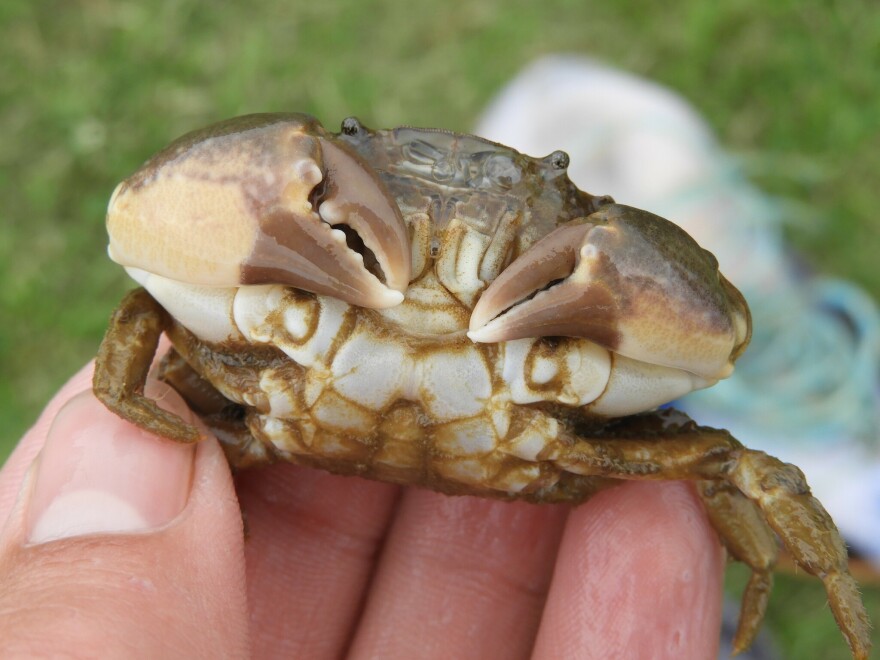Inside the Seawater Research Lab at the Virginia Institute of Marine Science in Gloucester Point, rows of water tanks hold specimens from around the region.
All sorts of marine creatures are studied. But the newest additions are a first for VIMS: stone crabs.
Stone crabs, which have strong, bulky claws and a muddier appearance than their blue counterparts, prefer a warm climate. They are typically found in coastal and offshore waters from South America to North Carolina.
Virginia watermen have occasionally reported sightings in recent years, including around the Eastern Shore. But four stone crabs at the VIMS lab are the first to be officially documented in Virginia waters.
“This is a tropical species, evolutionarily. That’s why you never found it north of North Carolina,” said Rom Lipcius, a professor at William & Mary’s Batten School and VIMS. “What we think is happening is the temperature here is much warmer than it used to be.”
As waters in the Chesapeake Bay get warmer, stone crabs appear to be expanding their range. Lipcius said the species’ minimum temperature threshold is about 5 degrees Celsius, or 41 Fahrenheit.
“We, in the past, routinely went below that and so they wouldn't survive,” he said. “But now it's rare that we get temperatures that low for a long time."
Lipcius is a “blue crab expert” and leads VIMS’ annual winter dredge survey. He said stone crabs were mentioned in passing during a Virginia Marine Resources Commission meeting, and he told local crabbers to give him a call if they caught any.
This summer, a waterman named Ty Farrington did. Farrington had caught several stone crabs around Norfolk’s Willoughby Spit, including the four at VIMS.
Lipcius said stone crabs could provide new opportunities for Virginia’s fishery.

They are expanding their range but are still native to the coast, unlike invasive species such as blue catfish. That means they’re unlikely to harm the ecosystem, he said.
Florida accounts for an overwhelming majority of stone crabs caught commercially in the U.S., according to the state’s Fish and Wildlife Conservation Commission.
The fishery is unique in that it only harvests the crab’s claws, which contain most of its tender meat. The crab is then returned to the water. Stone crabs can regrow their limbs within a few years, though many die after the declawing process.
Lipcius said oyster reefs are a key nursery habitat for baby stone crabs.
“So with the major oyster restoration efforts that we have, and also the harvest grounds that have been expanded, there's a lot of new habitat," he said.
Scientists previously documented stone crab larvae in the Chesapeake Bay. They have probably routinely been riding ocean currents into the area, but didn’t survive because of colder temperatures, Lipcius said.

The VIMS team is preparing to publish a scientific paper about the discovery of the stone crab. The researchers also hope to get the word out so other crabbers can report sightings.
Stone crabs can be confused with Atlantic mud crabs, which are common in the bay and have similarly brownish colors. Lipcius said the former tend to be larger, up to 6.5 inches across, versus about 2.5 inches for mud crabs.
Stone crabs also have pale horizontal stripes on their legs and prominent black claw tips.
The crabs caught so far are all male. Lipcius hopes to find females bearing eggs, which would help determine whether they are reproducing locally. He believes that’s likely.
“I think the stone crab’s here to stay.”
But Hampton Roads residents shouldn’t run out to hunt stone crabs, he warned. Only licensed crabbers and homeowners with docks can set traps.


